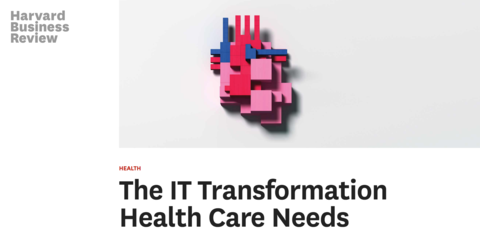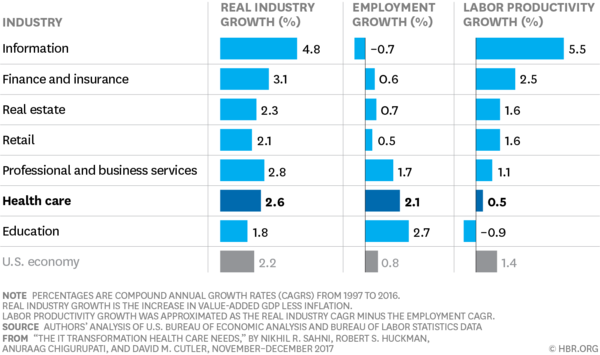In the mid-1990s, everyone knew that health care organizations across the United States were plagued by wasteful spending. The question for Intermountain Healthcare, which serves residents of Utah and Idaho, was where to start looking for savings internally. Data analyses quickly identified the most promising targets: 104 of the 1,440 clinical conditions that Intermountain treated accounted for 95% of the care it provided, and two services--newborn delivery and treatment of ischemic heart disease--accounted for 21% of its work.
So how can health care organizations realize the promise of their large and growing investments in IT to help lower costs and improve patient outcomes? While substantial attention has been paid to the potential medical benefits of new technologies such as inexpensive genetic screening, artificial intelligence, and wearable sensors that continuously monitor vital signs, our main focus is on how the organizations that deliver care can get much more out of their recent or planned investments in enterprisewide IT systems.
Our research on the ways health care could apply the experiences of other industries suggests that instead of viewing IT as a transactional tool for billing, monitoring, and error checking, organizations should embrace it as an instrument to help transform the way they deliver medical care. This will entail prioritizing quality improvement over cost cutting, making data collection easier and better, turning the data into actionable information for clinicians, and forging new operating and business models. We have found that while numerous health care organizations are moving in this direction, the majority are not making the holistic changes needed for transformation.
[...]
Source: Harvard Business Review (View full Article)
Posted by Dan Corcoran on November 28, 2017 06:43 AM




Post a comment